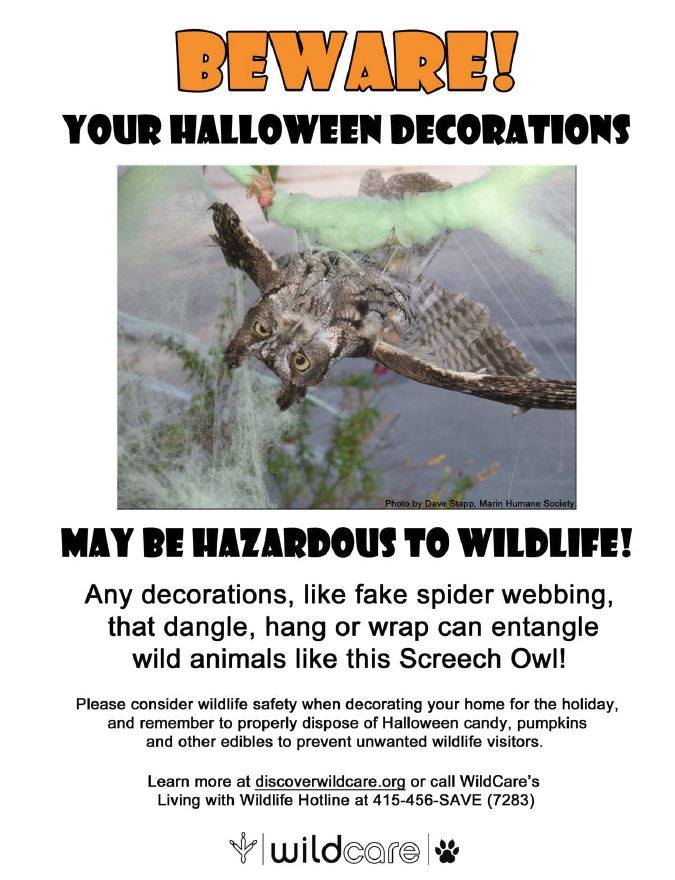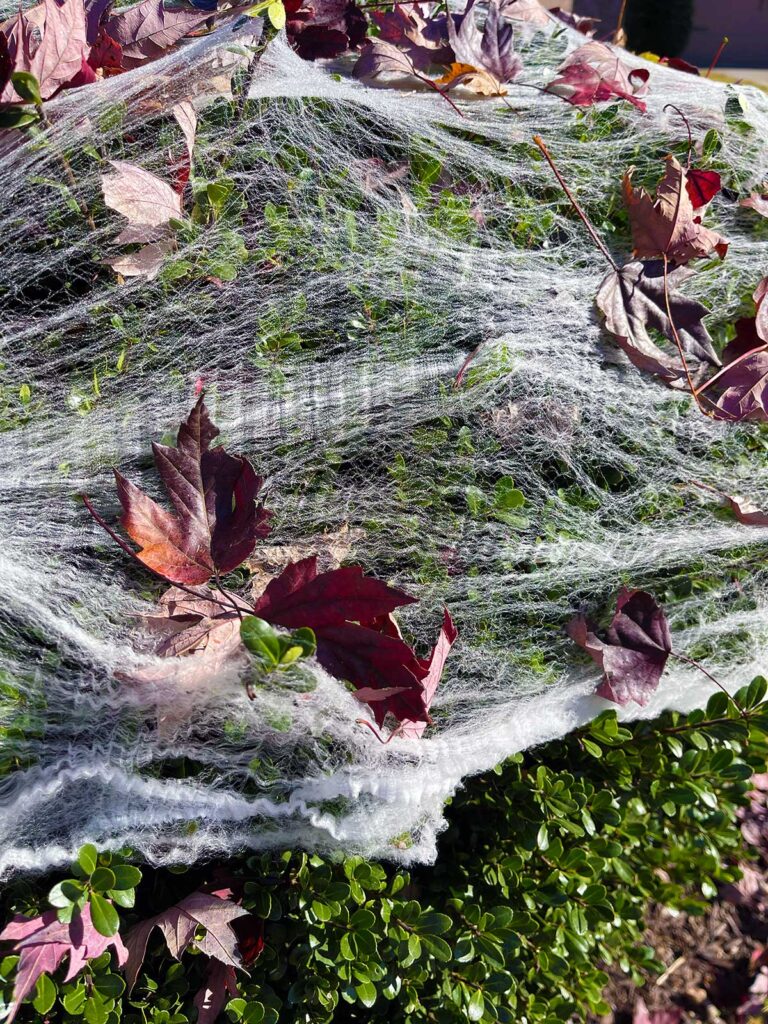I love Halloween! We decorate our yard with spooky decorations, string lights, and even a few inflatables. Our kids pick out the scariest costumes, and we get to see all of the neighborhood kids when they come to the door. If I place our motion-activated decorations in just the right spot, we might even give some of them a good scare.
October is often warm here in the Southeastern U.S. While some years it may be cold on Halloween night, many times, we are sweating in our Halloween costumes. As a result of the warmer temperatures, many plants are still in bloom, and the bees, butterflies, and songbirds are abundant in the garden. Additionally, the migration of hummingbirds is still ongoing, with birds flying in and around my plants and vines.
Halloween Spider Cobweb Décor Can Trap Birds, Bees, other Insects, and Hummingbirds
Fake spider webbing is made of stretchy artificial fibers. These fibers do not break easily and they aren’t biodegradable, so when an animal or insect gets trapped in them, it is very difficult for them to get out.
Kathryn Dudeck, Director of the Chattahoochee Nature Center in Roswell, GA, posted about fake spider webs on her Facebook account. She stated, “This is the time of year that [wildlife] rehabilitators receive numerous animals caught in these decorations, from songbirds to chipmunks and everything in between.”

Can you believe I came across an article about a screech owl getting stuck in fake spider webs? It took a call to the Humane Society who worked on cutting it free to get it released.
Check out this flyer produced by WildCare – you can see the owl stuck in the webbing! Yikes!
SIDE NOTE: The Chattahoochee Nature Center is one of our favorite places to visit! I get many of my native plants from their annual sales.
It seems some animals take the webbing and use it for nesting materials. A wildlife expert interviewed by the New York Post (September, 2023) stated that they had seen juvenile squirrels get entangled in fake spider web used for a nest.
Halloween also lands during peak migration of some wildlife like songbirds, waterfowl, and butterflies. When they stop for rest in neighborhoods, they can get caught up in the stretchy cobwebs used as Halloween decorations.
Why You Shouldn’t Hang Halloween Spider Web Decorations Outdoors
I included fake spider webbing in my arbor a few years ago, stringing it up with several sets of lights. Those stretchy cobwebs looked great, but I soon discovered a big problem with them.
As I was leaving the front door, I discovered a bumblebee had been caught in the fake spider webbing that I had hung up as decoration. I tried to release him, but he struggled even more and became more entangled.

This Halloween spider web decoration caught lots of leaves. Imagine how many insects or birds it could trap!
After a good 25 minutes of trying to get him free, I finally decided I had to try to cut him out. With a struggling bee in constant motion, it was quite a challenge. I got him free, but he still had a little webbing on his legs. Finally he cleaned himself off pretty well and took off flying.
But I learned a valuable lesson from this – fake Halloween spider webs are just as dangerous as the real stuff when put outdoors. So, please be safe and restrict the use of fake spider webs to indoor use (and keep it high where your indoor pets can’t get to it).
What to Use Instead of Fake Spider Web Decorations
You can still use your existing Halloween spider web decor – just use it indoors only. Make sure it isn’t where your curious pets can get into it or eat it (my mini labradoodle would totally get into this stuff).
I love the new rope-style spider web decor that you can buy (or make one of your own with this tutorial). You can get an enormous spider to go with it. Honestly, it’s a lot spookier than the traditional small spiders. Some of them even have string lights on them to make them show up at night. Very cool!

